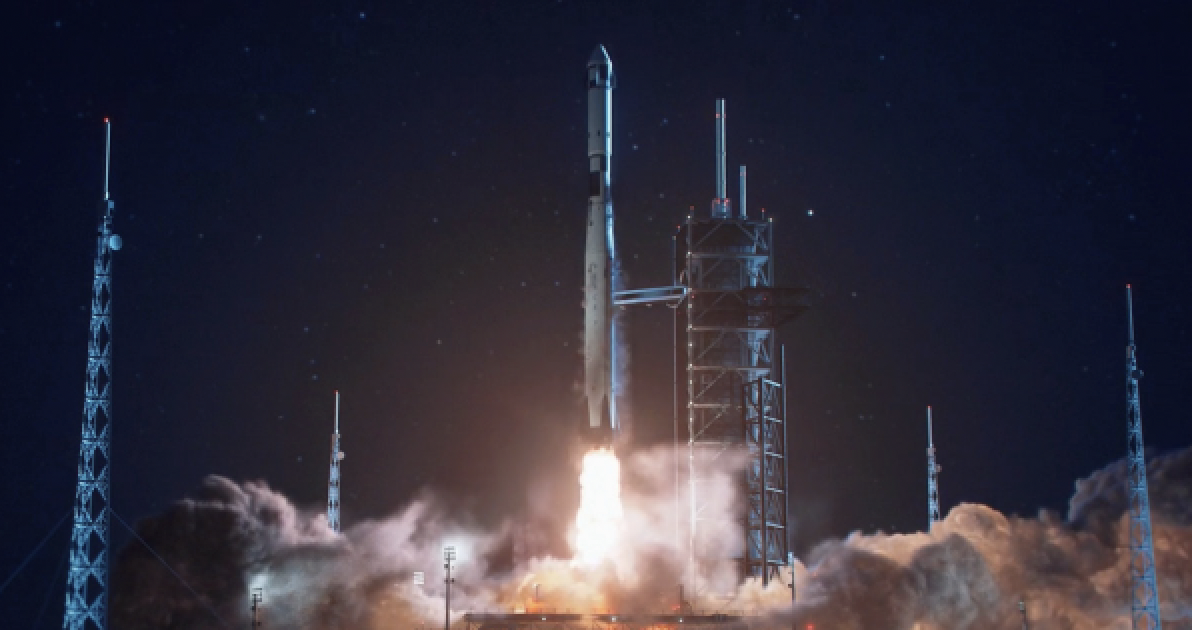New Space industry growth is rocketing toward a $1.8 trillion global value by 2035 according to the World Economic Forum — at the close of 2023, more than 9,000 active satellites flew in orbit about the Earth (SIA Report).

Thanks to innovative design and advancing microelectronic technologies, smallsats, cubesats, and satellite constellations are launching at higher and faster rates for a wide range of applications in Low-Earth orbit (LEO).
Achieving orbit, economic growth, and mission success will be dependent on the semiconductor supply chain’s ability to support New Space. The supply chain must meet needs around quantity, production pace, launch schedules, and mission designs.
Spirit Electronics is perfectly positioned to offer supply chain support for New Space applications and rapid deployment through franchised distribution access to a range of the industry’s best components, modules, and subsystems.
Add in-house engineering services, reliability testing, packaging, and assembly, and the New Space supply chain can achieve a synergy of stability and agility to meet the industry’s rapidly advancing goals.
Anatomy of a Commercial Satellite
___________________________________
New Space satellite design is driven by application and sizing can range from large and medium satellites down to microsatellites, nanosatellites and picosatellites. Cubesats are generally in the range of nanosatellites, measuring 10x10x10 cm. Multiple satellites may deploy together as a constellation or a swarm.
Common design trends center around an off-the-shelf computer with additional sensors, computer interface modules, power management, data retrieval modules, or other custom modules to meet the application needs. These may be assembled from individual microelectronic components or multi-component modules supporting a particular function.
Modules and Subsystems
___________________________________
Modules are an emerging trend in the New Space supply chain as they integrate a range of components and functionality into a single unit that can be quickly assembled and configured for launch.

Modules often include remote sensing, optical detectors, computing, and even additive manufacturing (3D printed) structures.
The decision for New Space companies is whether to buy modules or design and build custom modules from components themselves when considering costs and production timelines.
Spirit works with multiple manufacturers producing modules and circuit cards with space applications. In example, Texas Instruments offers a range of power modules capable of satellite power management and operations. ISOCOM, a newer supplier to Spirit’s lineup, specializes in optocouplers and solid-state relays and has even created rad-hard LED modules.
Compatibility and Standardization
___________________________________
New Space satellite design is trending toward component and module compatibility and standardization across projects and over the long-term life of a program.
While a satellite might launch, orbit and complete its mission and useful life, the competition is always considering what will happen next.
Designers are increasingly interested in components and module compatibility to more rapidly develop the next generation of capability.
Manufacturers within the supply chain want to support product compatibility to meet this market’s needs.
Spirit’s supply chain relationships across multiple manufacturers creates the opportunity to customize and communicate design requirements and compatibility specifications up and down the supply chain.
Design Supply Chain Efficiency
__________________________________
New Space satellite design embraces the functionality of off-the-shelf and commercially available components and modules. This means designers must evaluate available supply chain support early in the design cycle to ensure mission success.
Commercial satellites can take advantage of rapidly advancing technologies by designing with manufacturers’ newest off-the-shelf products, which reduces cost, accelerates delivery, and launches an efficient mission.
Working with a supply chain partner, such as Spirit, during the design stage accesses a range of franchised manufacturers for specialized product lines in New Space design. Cost, lead time, performance, and specs can be identified early in the project, with the ability to explore drop-in replacements and consider all mission parameters.
Space-Grade Component Options and Testing
___________________________________
Manufacturers are responding to New Space growth with a range of radiation- tolerant and plastic-packaged components, as well as launch-ready modules and subsystems that can be rapidly configured and assembled for launch.
Rad-tolerant and plastic-packaged options are tailored to New Space LEO mission requirements by reducing production costs and timelines for qualification.
The LEO environment has different radiation and environmental conditions compared to other orbit ranges. While off-the-shelf commercial products often have better survivability and performance rates on LEO missions, commercial satellite engineers and project planners must consider just how much risk off- the-shelf products could pose to mission success.
A streamlined and limited testing program can offer mission assurance while still meeting production cost and timelines. Testing only critical components and modules within mission-specific environmental conditions reduces the need to qualify all satellite components while reducing the risk of in-flight failures and production delays.
The decision comes down to what level of assurance is effective from the payload’s perspective.
Spirit Electronics provides in-house testing to complement component and module distribution. While procuring components and supporting test data from manufacturers, Spirit can test any component or system to meet mission requirements.
While LEO missions do not require the same military- or space-grade standardized qualification, Spirit can perform testing into those ranges.
As government space programs partner more and more frequently with commercial programs, this reliability range remains valuable to the New Space supply chain.
Bringing It Together Under One Supply Chain
___________________________________

The New Space satellite industry needs adaptable and efficient supply chain solutions to support its rapid growth. From the design stage to assembly and all the way through launch, Spirit’s supply chain services cover component and
module distribution, price and lead time management, real-time status reporting, testing, and even circuit card assembly.
Just as New Space operates with agile innovation and rapid deployment, supply chain support must be agile and flexible. Trends toward modular products, compatibility, and tailored reliability testing require strong supplier relationships and integration.
Spirit’s specialized approach for New Space supply chain management streamlines multiple functions within one partner for a synergistic and stable supply chain.
spiritelectronics.com

Marti McCurdy
Marti McCurdy is the Chief Executive Officer and owner of Spirit Electronics, She is a veteran — not only of the semiconductor business — but also of the United States Air Force. Marti’s focus as CEO is to serve the aerospace and defense industry for high reliability components. She exercises her engineering knowledge of space qualified flows and sophisticated testing to deliver flight class devices. Throughout her career as a business owner and most recent position as VP, Marti’s goal is to bring her high standard of customer service and cultivated relationships to serve the aerospace sector she is so familiar with. Marti holds a current patent and is a published author in ultrasonic applications.

